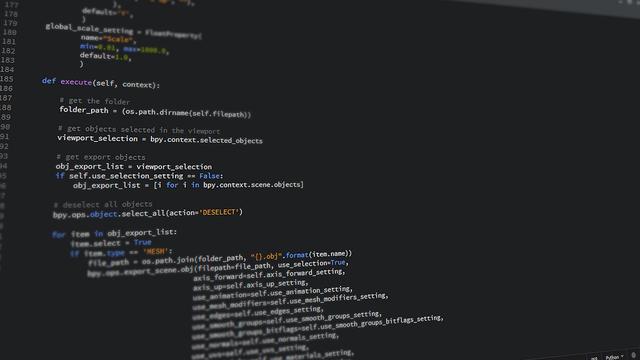12個驚人的Pandas和NumPy函數
我們都知道Pandas和NumPy很棒,它們在我們的日常分析中起著至關重要的作用。沒有Pandas和NumPy,我們將在這個龐大的數據分析和科學世界中迷茫。今天,我將分享12個驚人的Pandas和NumPy函數,這些函數將使您的生活和分析變得比以前容易得多。 最后,您可以找到本文所用代碼的Jupyter Notebook。

讓我們從NumPy開始
NumPy是使用Python進行科學計算的基本軟件包。它包含以下內容:
- 強大的N維數組對象
- 復雜的(廣播)功能
- 集成C / C++和Fortran代碼的工具
- 有用的線性代數,傅立葉變換和隨機數功能
除了其明顯的科學用途外,NumPy還可以用作通用數據的高效多維容器。可以定義任意數據類型。這使NumPy能夠無縫,快速地與各種數據庫集成。
1. argpartition()
NumPy具有此驚人的功能,可以找到N個最大值索引。輸出將是N個最大值索引,然后可以根據需要對值進行排序。
- x = np.array([12, 10, 12, 0, 6, 8, 9, 1, 16, 4, 6, 0])
- index_val = np.argpartition(x, -4)[-4:]
- index_val
- array([1, 8, 2, 0], dtype=int64)
- np.sort(x[index_val])
- array([10, 12, 12, 16])
2. allclose()
Allclose()用于匹配兩個數組并以布爾值形式獲取輸出。如果兩個數組中的項在公差范圍內不相等,則將返回False。這是檢查兩個數組是否相似的好方法,這實際上很難手動實現。
- array1 = np.array([0.12,0.17,0.24,0.29])
- array2 = np.array([0.13,0.19,0.26,0.31])
- # with a tolerance of 0.1, it should return False:
- np.allclose(array1,array2,0.1)
- False
- # with a tolerance of 0.2, it should return True:
- np.allclose(array1,array2,0.2)
- True
3. clip()
Clip()用于將值保留在一個間隔內的數組中。有時,我們需要將值保持在上限和下限之內。出于上述目的,我們可以使用NumPy的clip()。給定一個間隔,該間隔以外的值將被裁剪到間隔邊緣。
- x = np.array([3, 17, 14, 23, 2, 2, 6, 8, 1, 2, 16, 0])
- np.clip(x,2,5)
- array([3, 5, 5, 5, 2, 2, 5, 5, 2, 2, 5, 2])
4. extract()
顧名思義,Extract()用于根據特定條件從數組中提取特定元素。通過extract(),我們還可以使用諸如and和 or的條件。
- # Random integers
- array = np.random.randint(20, size=12)
- array
- array([ 0, 1, 8, 19, 16, 18, 10, 11, 2, 13, 14, 3])
- # Divide by 2 and check if remainder is 1
- cond = np.mod(array, 2)==1
- cond
- array([False, True, False, True, False, False, False, True, False, True, False, True])
- # Use extract to get the values
- np.extract(cond, array)
- array([ 1, 19, 11, 13, 3])
- # Apply condition on extract directly
- np.extract(((array < 3) | (array > 15)), array)
- array([ 0, 1, 19, 16, 18, 2])
5. where()
where()用于從滿足特定條件的數組中返回元素。它返回在特定條件下的值的索引位置。這幾乎類似于我們在SQL中使用的where條件,我將在下面的示例中進行演示。
- y = np.array([1,5,6,8,1,7,3,6,9])
- # Where y is greater than 5, returns index position
- np.where(y>5)
- array([2, 3, 5, 7, 8], dtype=int64),)
- # First will replace the values that match the condition,
- # second will replace the values that does not
- np.where(y>5, "Hit", "Miss")
- array(['Miss', 'Miss', 'Hit', 'Hit', 'Miss', 'Hit', 'Miss', 'Hit', 'Hit'],dtype='<U4')
6. percentile()
Percentile()用于計算沿指定軸的數組元素的第n個百分點。
- a = np.array([1,5,6,8,1,7,3,6,9])
- print("50th Percentile of a, axis = 0 : ",
- np.percentile(a, 50, axis =0))
- 50th Percentile of a, axis = 0 : 6.0
- b = np.array([[10, 7, 4], [3, 2, 1]])
- print("30th Percentile of b, axis = 0 : ",
- np.percentile(b, 30, axis =0))
- 30th Percentile of b, axis = 0 : [5.1 3.5 1.9]
如果您以前使用過它們,請就應該能體會到它對您有多大幫助。讓我們繼續前進到令人驚嘆的Pandas。
pandas:
pandas是一個Python軟件包,提供快速,靈活和富于表現力的數據結構,旨在使處理結構化(表格,多維,潛在異構)和時間序列數據既簡單又直觀。
Pandas非常適合許多不同類型的數據:
- 具有異構類型列的表格數據,例如在SQL表或Excel電子表格中
- 有序和無序(不一定是固定頻率)時間序列數據。
- 具有行和列標簽的任意矩陣數據(同類型或異類)
- 觀察/統計數據集的任何其他形式。實際上,數據根本不需要標記即可放入Pandas數據結構。
以下是Pandas做得好的一些事情:
- 輕松處理浮點數據和非浮點數據中的缺失數據(表示為NaN)
- 大小可變性:可以從DataFrame和更高維的對象中插入和刪除列
- 自動和顯式的數據對齊:可以將對象顯式地對齊到一組標簽,或者用戶可以簡單地忽略標簽并讓Series,DataFrame等自動為您對齊數據
- 強大,靈活的分組功能,可對數據集執行拆分應用合并操作,以匯總和轉換數據
- 輕松將其他Python和NumPy數據結構中的衣衫,、索引不同的數據轉換為DataFrame對象
- 基于智能標簽的切片,花式索引和大數據集子集
- 直觀的合并和聯接數據集
- 靈活地重塑和旋轉數據集
- 軸的分層標簽(每個刻度可能有多個標簽)
- 強大的IO工具,用于從平面文件(CSV和定界文件),Excel文件,數據庫加載數據,以及從超快HDF5格式保存/加載數據
- 特定于時間序列的功能:日期范圍生成和頻率轉換,移動窗口統計信息,日期移動和滯后。
1. read_csv(nrows = n)
您可能已經知道read_csv函數的使用。但是,即使不需要,我們大多數人仍然會錯誤地讀取整個.csv文件。讓我們考慮一種情況,即我們不知道10gb的.csv文件中的列和數據,在這里讀取整個.csv文件將不是一個明智的決定,因為這將不必要地占用我們的內存,并且會花費很多時間時間。我們可以僅從.csv文件中導入幾行,然后根據需要繼續操作。
- import io
- import requests
- # I am using this online data set just to make things easier for you guys
- url = "https://raw.github.com/vincentarelbundock/Rdatasets/master/csv/datasets/AirPassengers.csv"
- s = requests.get(url).content
- # read only first 10 rows
- df = pd.read_csv(io.StringIO(s.decode('utf-8')),nrows=10 , index_col=0)
2. map()
map()函數用于根據輸入對應關系映射Series的值。用于將系列中的每個值替換為另一個值,該值可以從函數,字典或系列中得出。
- # create a dataframe
- dframe = pd.DataFrame(np.random.randn(4, 3), columns=list('bde'), index=['India', 'USA', 'China', 'Russia'])
- #compute a formatted string from each floating point value in frame
- changefn = lambda x: '%.2f' % x
- # Make changes element-wise
- dframe['d'].map(changefn)
3. apply()
apply()允許用戶傳遞一個函數并將其應用于Pandas系列的每個單個值。
- # max minus mix lambda fn
- fn = lambda x: x.max() - x.min()
- # Apply this on dframe that we've just created above
- dframe.apply(fn)
4. isin()
isin()用于過濾數據幀。isin()幫助選擇在特定列中具有特定(或多個)值的行。這是我遇到的最有用的功能。
- # Using the dataframe we created for read_csv
- filter1 = df["value"].isin([112])
- filter2 = df["time"].isin([1949.000000])
- df [filter1 & filter2]
5. copy()
copy()用于創建Pandas對象的副本。將數據幀分配給另一個數據幀時,在另一個數據幀中進行更改時其值也會更改。為了防止出現上述問題,我們可以使用copy()。
- # creating sample series
- data = pd.Series(['India', 'Pakistan', 'China', 'Mongolia'])
- # Assigning issue that we face
- datadata1= data
- # Change a value
- data1[0]='USA'
- # Also changes value in old dataframe
- data
- # To prevent that, we use
- # creating copy of series
- new = data.copy()
- # assigning new values
- new[1]='Changed value'
- # printing data
- print(new)
- print(data)
6. select_dtypes()
select_dtypes()函數基于列dtypes返回數據框的列的子集。可以將此函數的參數設置為包括具有某些特定數據類型的所有列,也可以將其設置為排除具有某些特定數據類型的所有那些列。
- # We'll use the same dataframe that we used for read_csv
- framex = df.select_dtypes(include="float64")
- # Returns only time column
額外的獎勵:
pivot_table()pandas 最神奇最有用的功能是pivot_table。如果您猶豫使用groupby并想擴展其功能,那么可以很好地使用pivot_table。如果您知道數據透視表在excel中是如何工作的,那么對您來說可能只是小菜一碟。數據透視表中的級別將存儲在結果DataFrame的索引和列上的MultiIndex對象(分層索引)中。
- # Create a sample dataframe
- school = pd.DataFrame({'A': ['Jay', 'Usher', 'Nicky', 'Romero', 'Will'],
- 'B': ['Masters', 'Graduate', 'Graduate', 'Masters', 'Graduate'],
- 'C': [26, 22, 20, 23, 24]})
- # Lets create a pivot table to segregate students based on age and course
- table = pd.pivot_table(school, values ='A', index =['B', 'C'], columns =['B'], aggfunc = np.sum, fill_value="Not Available")
- table
Jupyter Notebook(使用代碼)可以從以下鏈接找到:
https://github.com/kunaldhariwal/Medium-12-Amazing-Pandas-NumPy-Functions






































